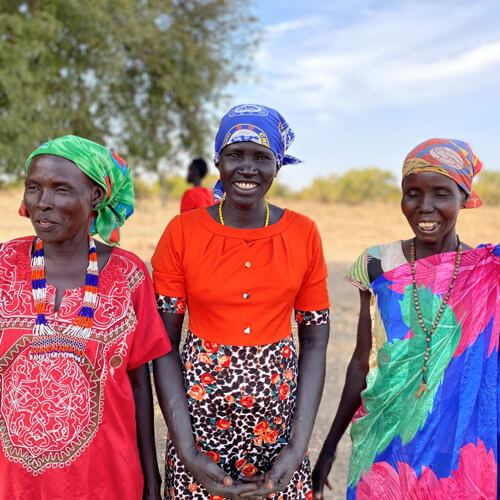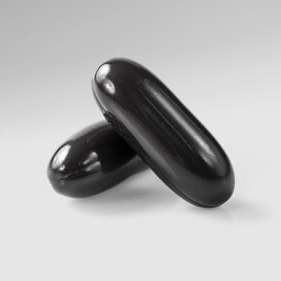BACKGROUND
Ingredient Type: Botanical, Herb, Extract
Also Known As: Onosma bracteatum, Sedge, Telsharong, Gojuhva
Gaozaban is a small shrub that grows in mountainous regions of the Middle East and Asia. It is also found in the Mediterranean regions of Europe and Asia. The gaozaban stem is simple, hairy; and arises from a cluster of radical, lanceolate leaves. Its flowers are blue or purple, trumpet-shaped; and found in silky, glomerate clusters. According to the early literature, dried gaozaban leaves and flowers were a sought-after traditional medicine that was imported from Iran.
The hydroalcoholic extract of gaozaban contains a variety of carbohydrates (52%), glycosides (13%), flavonoids (15%), and phenolic compounds (20%) (2). Potentially active chemical components of gaozaban include: aliphatic ketones, lipids, naphthazarins, alkaloids, phenolics, naphthoquinones, and flavones like shikonins and onosmins (22).
TRADITIONAL USES
Gaozaban is used in Ayurvedic Medicine to ease muscle tension and strengthen the nervous system. It’s used frequently as a tonic, alterative, demulcent, and diuretic. The German Commission E states that it has also been used traditionally for alleviating pulmonary infections and kidney disease.
It is believed that the plants of the Onosma genus possess anticancer, antioxidant, antimicrobial, antipyretic, anti-diabetic, antitussive and spasmolytic activities and can be helpful in the treatment of rheumatism, bladder pain, kidney irritation, or palpitation of heart (22).
In India, gaozaban is used in the treatment of hypertension, fever, and nervous conditions; while in Turkey it is used to treat inflammatory disorders such as tonsillitis, hemorrhoids and bronchitis and pain.
Gaozaban is most frequently used in health supplements today to promote cardiovascular function (2).
WHAT DOES SCIENCE TELL US?
- O. bracteatum showed a protective effect against stress-induced impaired immune function, cognitive functions, and circulating blood glucose levels. These findings seem to support the traditional use of O. bracteatum for the treatment of immunity ailments and/or dementia (3).
- In a rodent study the % alternation on a plus maze, which is a measure of stress control (SC), was found to be significantly decreased (p<0.05) in gaozaban-treated rodents compared to non-treated rodents (4).
- In one study, blood glucose level was found to be significantly decreased with all the doses of the O. bracteatum treated (6).
SAFETY
An acute toxicity study showed that several doses (5, 10, and 20 mg/kg) of the O. bracteatum extract were non-toxic. (2).
Interactions
- None reported in the current literature
REFERENCES
- http://www.himalayawellness.com/herbalmonograph/sedge.htm
- http://www.jcdr.net/articles/PDF/2489/64%20-%204093.pdf
- Charaka Samhita, Shri Gulabkunverba Ayurvedic Society, Jamnagar, Ayurvedic Mundranalaya, Jamnagar 1949; 4: 1952.
- Khandelwal KR, Practical Pharmacognosy, 19th ed., Nirala Prakashan, Pune 2008; 152-53.
- Choudhary GP. The in vitro mast cell stabilization activity of the Onosma bracteatum wall. I. J. Pharma. Bio Sci 2010; 1: 1-6.
- Kirtikar KR, Basu BD. Indian Medicinal Plants, 2nd ed., International book distributors 1999; 3:1699.
- Nadkarni KM. Indian Materia Medica, 3rd ed., Popular Prakashan Pvt. Ltd. 2002;1; 871.
- Chopra RN, Nayar SL, Chopra IC. Glossary of the Indian Medicinal Plants (Including the Supplement), 1986; 240.
- Chopra RN, Nayar SL, Chopra IC. Glossary of the Indian Medicinal Plants, 1956; 219.
- Patel KG, Patel KV, Gandhi TR. Evaluation of the effect of the Onosma Bracteatum Wall (Boraginaceae) on the bronchial hyperreactivity in sensitized guinea pigs. Iranian J Pharmacol Therapeut 2008; 7: 35-45.
- Bejar C, Wang RH, Weinstock M. Gender differences in the effect of rivastigmine on the brain cholinesterase activity and the cognitive function in rats. Eur J Pharmacol 1999; 383: 231-40. [10] Kumar MHV, Gupta YK. The intra-cerebroventricular administration of colchicine produces a cognitive impairment with oxidative stress in rats. Pharmacol Biochem Behav 2002; 73: 565-71.
- Ragozzino MF, Pal SN, Unick K, Steigani MR, Gold PE. Modulation of the hippocampal acetylcholine release and the spontaneous alteration scores by intrahippocampal glucose injection. J Neurosci 1998; 18: 1595-601. [12] Bin-Hafeez B, Ahmad I, Haque R, Raisuddin. The protective effects of Cassia occidentalis L on the cyclophosphamide-induced suppression of the humoral immunity in mice. J Ethnopharmacol 2001; 75: 13-38.
- Johrapurkar AA, Zambad SP, Wanjari MM, Umathe SN. Evaluation of the antioxidant activity of Rubia cardifolia on the ethanol-induced immunosuppression. I J Pharmacol 2003; 35: 232-36.
- Lowry OH, Rosenbrough NJ, Forr AL, Randall RJ. Protein measurement by using the Folin’s phenol reagent. J Biol Chem 1951; 193: 265-75.
- Ellman GL, Courtney KD, Anders F, Featherstone RM. A new and rapid colorimetric determination of acetylcholinesterase activity. Biochem Pharmacol 1961; 7: 88-95.
- Chrousos GP, Gold PW. The concepts of stress and stress system disorders. An overview of the physical and behavioral homeostasis. JAMA 1992; 267: 1244-52.
- Kaplan RJ, Greenwood CE, Winocur G, Wolever TMS. The cognitive performance is associated with glucose regulation in healthy elderly persons and it can be enhanced by the use of glucose and dietary carbohydrates. Am J Clin Nutr 2000; 72: 825-36.
- Tucek S, Cheng SC. Provenance of the acetyl group of acetylcholine and compartmentation of acetyl-CoA and the Krebs cycle intermediates in the brain in vivo. J Neurochem 1974; 22: 893-914. [19] Gibson GE, Blass JP. The impaired synthesis of acetylcholine in the brain which accompanied mild hypoxia and hypoglycemia. J Neurochem 1976; 27: 37-42.
- Ragozzino ME, Unick KE, Gold PE. Hippocampal acetylcholine release during memory testing in rats: augmentation by glucose. Proc Natl Acad Sci U S A 1996; 93: 4693-98.
- https://easyayurveda.com/2017/02/01/gojihva-onosma-bracteatum/
- https://www.nhp.gov.in/onosma-bracteatum-wall-or-borago-officinalis-linn_mtl
- https://www.ncbi.nlm.nih.gov/pmc/articles/PMC3841992/
- Favarger PC. Recherches Cytologiques Sur Quelques Onosma D’europe Occidentale. [Last accessed on 2013 Feb 10];Ann Naturhistor Mus Wien. 1971 75:59–65. Available from:http://www.landesmuseum.at/pdf_frei_remote/ANNA_75_0059-0065.pdf .
- Oxid Med Cell Longev. 2014;2014:792574. doi: 10.1155/2014/792574. Epub 2014 Mar 6. In vitro antioxidant and cytotoxic activities of Arnebia benthamii (Wall ex. G. Don): a critically endangered medicinal plant of Kashmir Valley.Ganie SA1, Dar TA1, Hamid R2, Zargar O1, Ul Abeer 3, Masood A2, Amin S2, Zargar MA1.
- https://www.ncbi.nlm.nih.gov/pmc/articles/PMC3964854/









